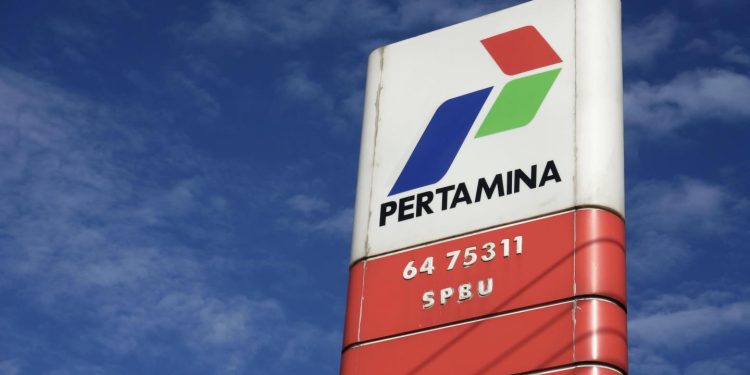
The recent changes in the management of energy resources have sparked discussions across various sectors. Addressing the challenges of demand and conservation has become paramount in ensuring that essential services remain uninterrupted while maintaining efficiency.
As authorities seek to balance the needs of consumers with the realities of resource availability, innovative strategies are being implemented. These alterations are aimed not only at controlling usage but also at ensuring that vital materials are preserved for long-term sustainability.
The initiative reflects a growing recognition of the importance of responsible consumption patterns. By adjusting access based on specific criteria, decision-makers hope to foster a more sustainable environment that benefits both current and future generations.
Understanding Pertamina’s Fuel Supply Strategy
This section delves into the strategic approach taken by the national enterprise to manage its distribution channels effectively. The primary aim is to ensure that resources are allocated in a manner that addresses demand while minimizing waste. By implementing well-thought-out policies, the organization seeks to tackle challenges within the market and maintain a steady flow of petroleum products.
Key Components of the Distribution Approach
One crucial aspect of this strategy involves the assessment of consumption patterns across different regions. By analyzing data related to usage, the company can identify areas where resources may be over or underutilized. This allows for a more tailored distribution plan that aligns with local needs, ensuring that each area receives an adequate amount based on its unique circumstances.
Long-term Goals and Sustainability
Beyond immediate concerns, the organization is focused on building a sustainable framework for the future. By fostering partnerships with various stakeholders, including local authorities and businesses, the aim is to create a resilient infrastructure that can adapt to evolving demands. This approach not only addresses current issues but also positions the enterprise to meet future challenges in an ever-changing economic landscape.
Reasons Behind the New Fuel Limits
Recent developments in the distribution landscape have prompted a strategic adjustment aimed at enhancing overall management practices. These measures are designed to ensure a more sustainable approach to the allocation of essential resources, addressing both supply chain challenges and consumer needs effectively.
1. Ensuring Resource Availability
One significant factor driving these changes is the necessity to maintain consistent access to vital resources. By implementing new guidelines, organizations can prevent shortages and ensure that all consumers receive fair access, thereby fostering a sense of equity among users.
2. Mitigating Environmental Impact
Another crucial aspect is the commitment to environmental sustainability. By controlling consumption, the aim is to lessen the ecological footprint and promote responsible usage. This not only benefits the environment but also encourages individuals to adopt more mindful habits concerning their consumption patterns.
In summary, these changes are integral to adapting to the current landscape, balancing availability with responsible practices, while ultimately striving for a harmonious relationship between demand and sustainability.
Impact on Local Consumers and Businesses
The recent adjustments to fuel distribution have resulted in significant changes for individuals and enterprises within the community. As the availability of certain products becomes more limited, the repercussions ripple through everyday activities, affecting everything from commuting habits to operational capacities of local businesses. Understanding these implications is crucial for both consumers and entrepreneurs as they navigate the new landscape.
Effects on Daily Commuting
With the implementation of new guidelines, residents may find themselves facing challenges in their daily travel routines. Increased waiting times and adjustments to the frequency of refueling can lead to frustration and inconvenience. As a result, many individuals may opt for alternative modes of transport, potentially increasing the demand for public transportation or carpooling options. This shift not only impacts personal schedules but also influences traffic patterns throughout the area.
Challenges for Small Enterprises
For local businesses, limited access to essential resources can hinder operations significantly. Companies reliant on transportation to distribute products may struggle to maintain their service levels, leading to delays that can erode customer trust. Smaller establishments, already navigating the complexities of a competitive market, may find it particularly difficult to adapt to these changes, potentially impacting their bottom line. Strategic planning and effective communication with clients will be vital to mitigate these challenges and maintain customer loyalty amidst this evolving scenario.
Implementation Timeline for Fuel Restrictions
The forthcoming alterations in the distribution of energy resources will unfold in a well-structured manner to ensure a seamless transition. This timeline outlines the key phases in the rollout of these measures, reflecting a commitment to managing resources efficiently while minimizing disruption to consumers.
Phase 1: Initial Announcement – The first stage involves disseminating information about the impending changes. This phase is critical for raising awareness among the public and stakeholders, enabling them to prepare for the upcoming adjustments. The announcement is expected within the next few weeks.
Phase 2: Pilot Program Launch – Following the initial communication, a pilot program will commence in selected locations. This trial phase aims to assess the effectiveness of the implemented strategies and gather feedback from users. The pilot is slated to begin three months after the announcement.
Phase 3: Full Implementation – Based on insights gained from the pilot program, the comprehensive application of the new measures will begin. This stage will span various regions, ensuring that the transition occurs smoothly. Full implementation is projected to start six months after the pilot program concludes.
Phase 4: Evaluation and Adjustment – Once the new system is in place, continuous monitoring and evaluation will be conducted to identify areas for improvement. Adjustments will be made as necessary to enhance efficiency and user satisfaction, beginning approximately one year after the full rollout.
Responses from the Public and Stakeholders
The recent changes to the access and availability of fuel services have sparked a variety of reactions from consumers and industry representatives alike. These alterations aim to manage resources more effectively, but they have also raised concerns and feedback from different segments of society.
Public Reactions
-
Many individuals have expressed frustration due to long wait times and limited access to essential resources.
-
Some consumers understand the necessity of these measures, citing them as a means to ensure sustainability and prevent shortages in the long run.
-
Social media platforms have become a hotbed for debate, with users sharing their experiences and voicing their opinions on the adjustments.
Industry Feedback
-
Industry representatives have acknowledged the need for regulation but have raised concerns about the potential impact on businesses reliant on steady access to these resources.
-
Several stakeholders are advocating for clearer communication and advance notice regarding any changes to ensure smooth operations.
-
Some voices within the sector emphasize the importance of balancing consumer needs with resource management strategies.
Future Prospects for Indonesia’s Energy Sector
As Indonesia navigates the complexities of its energy landscape, the outlook for its sector reveals both challenges and opportunities. The nation stands at a crossroads, balancing the need for sustainable practices with the demand for economic growth. Innovations in technology and shifts in consumer behavior are poised to shape the trajectory of energy consumption and production in the coming years.
Embracing Renewable Alternatives
Transitioning towards greener energy sources is essential for Indonesia’s future. With rich natural resources, the potential for harnessing solar, wind, and hydro power is immense. Investment in these alternatives will not only contribute to environmental sustainability but also create job opportunities and stimulate local economies. The government’s commitment to reducing carbon emissions sets a proactive tone for the nation’s energy strategy.
Enhancing Energy Accessibility
Addressing the energy needs of its population remains a critical focus. Ensuring equitable access to energy services, especially in rural areas, will be pivotal in promoting economic development and improving quality of life. The integration of modern technologies, such as smart grids and decentralized energy systems, can facilitate more reliable and efficient distribution networks, ultimately benefiting consumers and businesses alike.
In summary, the future of Indonesia’s energy sector depends on a robust mix of innovation, sustainability, and accessibility to meet the growing demands of its society while safeguarding the environment for generations to come.
Q&A: Pertamina trials fuel restrictions at gas stations
What are the main reasons behind Pertamina’s decision to introduce fuel restrictions at gas stations?
Pertamina has implemented fuel restrictions at gas stations primarily to optimize supply and ensure a more efficient distribution of fuel across the regions. The company aims to prevent shortages and long queues at gas stations, which have been exacerbated by increased demand for fuel. By limiting the amount of fuel that can be purchased at one time, Pertamina can better manage its resources and maintain a steady supply for all consumers. This measure also seeks to discourage hoarding and black market trading of fuel, contributing to a more equitable distribution among the public.
How will the fuel restrictions impact consumers in Indonesia?
The fuel restrictions are expected to have a mixed impact on consumers in Indonesia. On one hand, these restrictions may lead to shorter wait times at gas stations, as the limits will help prevent large-scale purchases that often cause long queues. On the other hand, some consumers may initially find it inconvenient if they need to make more frequent trips to refuel, especially those with larger fuel tanks. Overall, the restrictions aim to create a more stable fuel supply and could ultimately benefit consumers by reducing the risk of fuel shortages in the long term.
Are there any specific limits on fuel purchases that consumers should be aware of?
Yes, Pertamina has outlined specific limits on how much fuel consumers can purchase at one time, although the exact amount may vary by region and gas station. Generally, the limits could be set to a certain number of liters per vehicle or per customer, which is designed to prevent overspending and hoarding. Consumers are encouraged to check with their local gas station for applicable limits, as these may be subject to change depending on regional fuel availability and demand.
What measures is Pertamina taking to enforce these fuel restrictions at gas stations?
Pertamina is implementing various measures to enforce the fuel restrictions at gas stations. These may include training gas station attendants to monitor purchases and keep track of the limits for each transaction. Additionally, Pertamina may utilize technology to assist in tracking fuel distributions and consumer purchases. Surveillance may also be employed to prevent potential abuses of the system, such as multiple purchases by the same consumer. By taking these steps, Pertamina aims to ensure compliance with the new fuel restrictions and maintain fairness in fuel distribution.
How long is Pertamina planning to maintain these fuel restrictions?
The duration for which Pertamina plans to maintain the fuel restrictions is currently uncertain and may depend on various factors such as fuel availability, market demand, and the overall stability of the fuel supply chain. Pertamina has stated that these measures are part of an ongoing effort to optimize fuel distribution, which suggests that the restrictions could remain in place until they successfully address the issues at hand. The company has indicated that it will continuously monitor the situation and may adjust the restrictions as necessary based on the supply-demand dynamics in the future.
What changes have been implemented for buying subsidized fuel in Jakarta, and how does the MyPertamina app play a role?
In Jakarta, buying subsidized fuel, such as Pertalite and diesel, has undergone changes to manage distribution and control subsidies. The government, along with Pertamina, has introduced the MyPertamina app, which requires users to register their vehicle registration plates. This app uses QR codes during transactions to ensure that fuel purchases are tracked and regulated. Pertamina has been trialing these restrictions to prevent misuse and ensure that the subsidies are used efficiently.
How does the MyPertamina application affect the purchase of subsidized fuel products like Pertalite and diesel?
The MyPertamina application affects the purchase of subsidized fuel products by requiring users to register and use QR codes during transactions. This system is designed to manage and monitor the distribution of subsidized fuels, such as Pertalite and diesel. Users must either manually input their vehicle registration plates or use the MyPertamina app to scan QR codes at the fuel pump. This approach helps keep track of fuel usage and ensures compliance with daily limits and subsidies.
What role does Pertamina Patra Niaga play in the sale of subsidized fuel in Jakarta?
Pertamina Patra Niaga, the trading arm of Pertamina, is responsible for the sale and distribution of subsidized fuel products, including Pertalite and diesel, in Jakarta. This company handles the logistics and retail aspects of fuel distribution, ensuring that subsidized fuel is available at its outlets. Pertamina Patra Niaga is crucial in implementing restrictions and monitoring the sale of these products to prevent abuse and manage subsidies effectively.
How has the government’s policy on subsidized fuel affected fuel prices and distribution in Jakarta?
The government’s policy on subsidized fuel has led to changes in fuel prices and distribution in Jakarta. The policy includes the introduction of the MyPertamina app and QR code system to regulate fuel purchases. The aim is to control the distribution of subsidized fuels like Pertalite and diesel, managing their availability and pricing. This approach helps to prevent excessive use and ensures that subsidies are used appropriately, while also affecting the daily ceiling limits for fuel purchases.
What are the daily limits for purchasing subsidized diesel fuel and how are these limits enforced?
The daily limits for purchasing subsidized diesel fuel have been regulated by BPH Migas and are enforced through the MyPertamina app and manual recording methods. Currently, the daily ceiling limit for diesel is set at 200 liters per vehicle. Fuel pump operators keep a record of vehicle registration plates manually or through the app to ensure compliance with these limits. The app helps track transactions and prevent exceeding the allowed amount, thereby managing the distribution of subsidized fuel effectively.




